Description
One tablet contains
| Active ingredient: | erythromycin (in terms of active substance) -117.0 mg (100 mg) and 292.4 mg (250 mg) |
| Excipients: | calcium stearate monohydrate, sucrose (white sugar), polysorbate-80 (tween-80), lactose monohydrate (milk sugar), sodium carboxymethyl starch (sodium starch glycolate), potato starch |
| Shell composition: | methacrylic acid copolymer, magnesium hydrosilicate (talc), polysorbate-80 (tween-80), povidone, titanium dioxide E171 |
Pharmacological properties
Pharmacokinetics
Absorption is high. Eating does not affect the oral forms of erythromycin in the form of a base, enteric-coated. The maximum concentration (Cmax) is reached after oral administration in 2-4 hours. Communication with plasma proteins is 80%.
Bioavailability – 30-65%. Distributed unevenly throughout the body. In large quantities accumulates in the liver, spleen, kidneys. In bile and urine, the concentration is ten times higher than the concentration in plasma. It penetrates well into the tissues of the lungs, lymph nodes, middle ear exudate, prostate secretion, semen, pleural cavity, ascitic and synovial fluid. The milk of lactating women contains 50% of the plasma concentration. Poorly penetrates through the blood-brain barrier into the cerebrospinal fluid (its concentration is 10% of the content of the drug in plasma). With inflammatory processes in the membranes of the brain, their permeability to erythromycin increases slightly. Penetrates through the placental barrier and enters the blood of the fetus, where its content reaches 5-20% of the content in the mother’s plasma.
Metabolized in the liver (more than 90%), partly with the formation of inactive metabolites. The half-life (T1 / 2) is 1.4-2 hours, with anuria – 4-6 hours. Excretion with bile – 20-30% unchanged, kidneys (unchanged) after oral administration – 2-5%.
Pharmacodynamics
A bacteriostatic antibiotic from the macrolide group, reversibly binds to the 50S subunit of ribosomes in its donor part, which disrupts the formation of peptide bonds between amino acid molecules and blocks the synthesis of proteins of microorganisms (does not affect the synthesis of nucleic acids). When used in high doses, it may exhibit a bactericidal effect. The spectrum of action includes gram-positive (Staphylococcus spp., producing and not producing penicillinase, including Staphylococcus aureus; Streptococcus spp. (including Streptococcus pneumoniae, Streptococcus pyogenes), alpha-hemolytic streptococcus (Viridans group), Bacillus anthracis , Corynebacterium diphtheriae, Corynebacterium minutissimum) and gram-negative microorganisms (Neisseria gonorrhoeae, Haemophilus influenzae, Bordetella pertussis, Brucella spp., Legionella spp., incl. Legionella pneumophila) and other microorganisms: Mycoplasma spp. (including Mycoplasma pneumoniae), Chlamydia spp. (including Chlamydia trachomatis), Treponema spp., Rickettsia spp., Entamoeba histolytica, Listeria monocytogenes.
Gram-negative bacteria are resistant: Escherichia coli, Pseudomonas aeruginosa, as well as Shigella spp., Salmonella spp. etc. The sensitive group includes microorganisms whose growth is delayed at an antibiotic concentration of less than 0.5 mg/l, moderately sensitive – 1-6 mg/l, moderately resistant and resistant – 6-8 mg/l.
Indications for use
– diphtheria (including bacterial carriage), whooping cough (including prevention), trachoma, brucellosis, legionnaires’ disease, erythrasma, listeriosis, scarlet fever, amoebic dysentery
– urinary infections in pregnant women caused by Chlamydia trachomatis
– primary syphilis (in patients allergic to penicillins), uncomplicated chlamydia in adults (with localization in the lower urinary tract and rectum), gonorrhea
– tonsillitis, otitis media, sinusitis
– cholecystitis
– tracheitis, bronchitis, pneumonia, pneumonia in children
– pustular skin diseases, incl. juvenile acne, infected wounds, bedsores, II-III stage burns, trophic ulcers
– infections of the mucous membrane of the eyes
– prevention of exacerbations of streptococcal infection in patients with rheumatism
– prevention of infectious complications during medical and diagnostic procedures (including preoperative bowel preparation, dental interventions, endoscopy, in patients with heart defects).
Dosage and administration
inside.
A single dose for adults and adolescents over 14 years old is 0.25-0.5 g, daily dose is 1-2 g in 2-4 doses, the maximum daily dose is 4 g.
Children from 6 to 14 years old, depending on age, body weight and severity of infection – 30-50 mg / kg / day in 2-4 doses. In case of severe infections, the dose may be doubled.
For the treatment of diphtheria carriage – 0.25 g 2 times a day. The course dose for the treatment of primary syphilis is 30-40 g, the duration of treatment is 10-15 days.
With amoebic dysentery, adults – 0.25 g 4 times a day, children – 30-50 mg / kg / day; course duration – 10-14 days.
With legionellosis – 0.5-1 g 4 times a day for 14 days.
With gonorrhea – 0.5 g every 6 hours for 3 days, then 0.25 g every 6 hours for 7 days.
For preoperative preparation of the intestine in order to prevent infectious complications – inside, 1 g for 19 hours, 18 hours and 9 hours before the operation (total 3 g).
For the prevention of streptococcal infection (with tonsillitis, pharyngitis) for adults – 20-50 mg / kg / day, for children – 20-30 mg / kg / day, the duration of the course is at least 10 days.
For the prevention of septic endocarditis in patients with heart defects – 1 g for adults and 20 mg / kg for children, 1 hour before the medical or diagnostic procedure, then 0.5 g for adults and 10 mg / kg for children, repeatedly after 6 hours
With whooping cough – 40-50 mg / kg / day for 5-14 days.
With pneumonia in children – 50 mg / kg / day in 4 doses, for at least 3 weeks.
For urinary infections during pregnancy – 0.5 g 4 times a day for at least 7 days or (if such a dose is poorly tolerated) – 0.25 g 4 times a day for at least 14 days.
In adults, with uncomplicated chlamydia and intolerance to tetracyclines – 0.5 g 4 times a day for at least 7 days.
Side effects
Sometimes:
– skin allergic reactions (urticaria, other forms of rash)
– eosinophilia
– nausea, vomiting, gastralgia, tenesmus, abdominal pain, diarrhea, dysbacteriosis
– violation of liver function, increased activity of “liver” transaminases, pancreatitis
– hearing loss and / or tinnitus (when using high doses – more than 4 g / day, hearing loss after discontinuation of the drug is usually reversible)
Rarely
– cholestatic jaundice
– tachycardia, prolongation of the QT interval on the ECG, ventricular arrhythmias, including ventricular tachycardia (pirouette type), in patients with a prolonged QT interval
– oral candidiasis, pseudomembranous enterocolitis (both during and after treatment)
– anaphylactic shock
– convulsions
Contraindications
– hypersensitivity to the drug
– liver disease
– significant hearing loss
– simultaneous reception of terfenadine or astemizole
– hereditary fructose intolerance, Lapp-lactase enzyme deficiency, glucose-galactose malabsorption
– lactation period
– children’s age up to 6 years
Carefully
– arrhythmias (history), prolongation of the QT interval, jaundice (history)
– hepatic and/or renal insufficiency.
Drug Interactions
Drugs that block tubular secretion prolong the half-life of erythromycin.
Incompatible with lincomycin, clindamycin and chloramphenicol (antagonism).
Reduces the bactericidal effect of beta-lactam antibiotics (penicillins, cephalosporins, carbopenems).
Increases the content of theophylline.
When taken simultaneously with drugs that are metabolized in the liver (theophylline, carbamazepine, valproic acid, hexobarbital, phenytoin, alfentanil, disopyramide, lovastatin, bromocriptine), the plasma concentration of these drugs may increase (it is an inhibitor of microsomal liver enzymes).
Increases the nephrotoxicity of cyclosporine (especially in patients with concomitant renal failure). Reduces the clearance of triazolam and midazolam, and therefore may enhance the pharmacological effects of benzodiazepines.
When taken simultaneously with terfenadine or astemizole – the possibility of developing arrhythmias, with dihydroergotamine or non-hydrogenated ergot alkaloids – vasoconstriction to spasm, dysesthesia.
Slows down the elimination (enhances the effect) of methylprednisolone, felodipine and coumarin anticoagulants.
When co-administered with lovastatin, rhabdomyolysis is enhanced.
Increases the bioavailability of digoxin.
Reduces the effectiveness of hormonal contraception.
Special instructions
With prolonged therapy, it is necessary to monitor laboratory parameters of liver function.
Symptoms of cholestatic jaundice may develop a few days after the start of therapy, but the risk of development increases after 7-14 days of continuous therapy.
Some resistant strains of Haemophilus influenzae are susceptible to concomitant use of erythromycin and sulfonamides.
May interfere with the determination of catecholamines in the urine and the activity of “liver” transaminases in the blood (colorimetric determination using definylhydrazine).
Pregnancy and lactation
When using the drug during pregnancy, the intended benefit to the mother and the potential risk to the fetus should be assessed.
Due to the possibility of penetration into breast milk, you should refrain from breastfeeding when prescribing erythromycin.
Features of the influence of the drug on the ability to drive a vehicle or potentially dangerous mechanisms
Does not affect.
Overdose
Symptoms: nausea, diarrhea, discomfort in the stomach, mild acute pancreatitis, dizziness (especially in patients with liver and kidney failure), impaired liver function, up to acute liver failure, hearing loss.
Treatment: activated charcoal, careful monitoring of the respiratory system. Gastric lavage is effective at a dose five times higher than the average therapeutic dose. Hemodialysis, peritoneal dialysis, forced diuresis are ineffective.
Storage conditions
Store in a dry place, at a temperature not exceeding 25 °C.
Keep out of the reach of children!
Shelf life – 2 years
Do not use after the expiration date.
Additional information
| Ingredient |
|---|





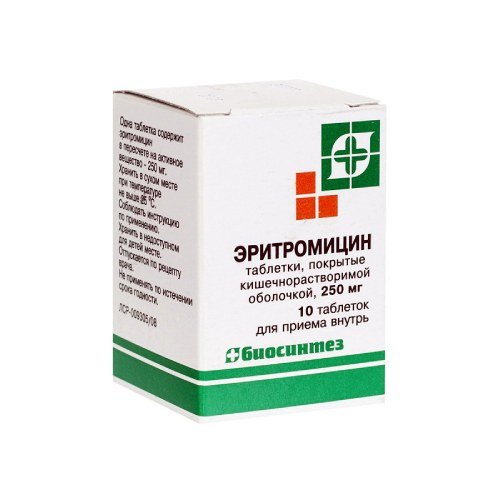
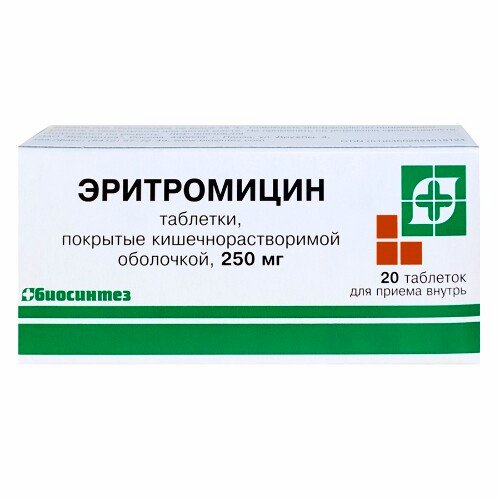
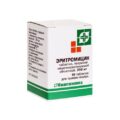
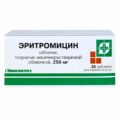


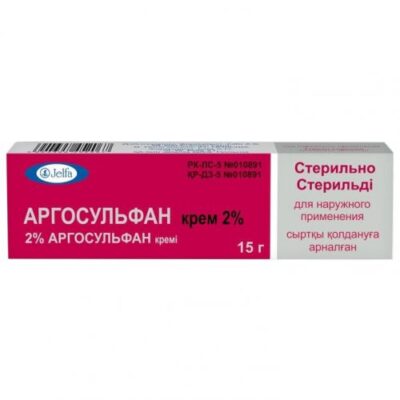
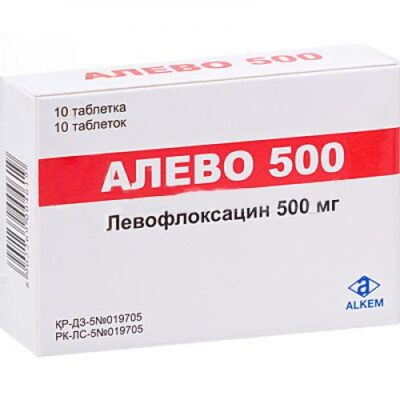
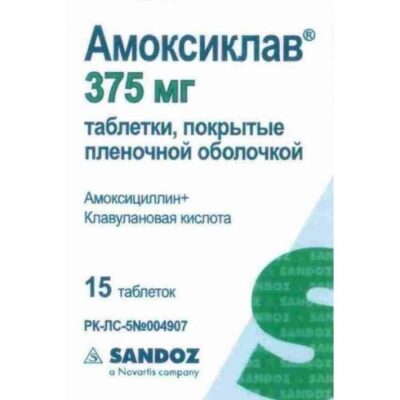
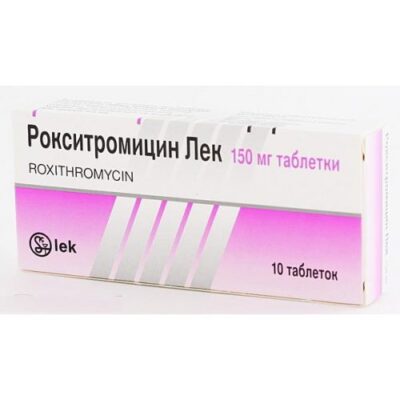
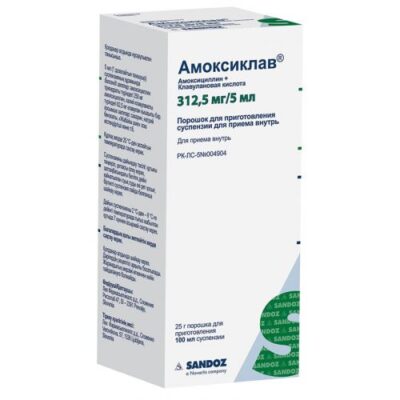
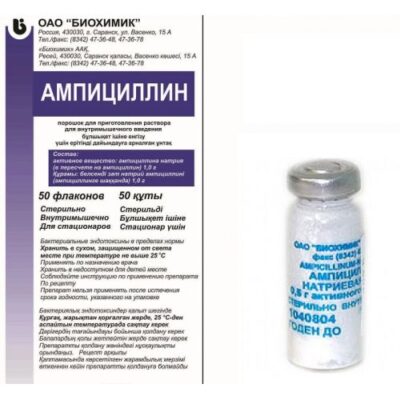
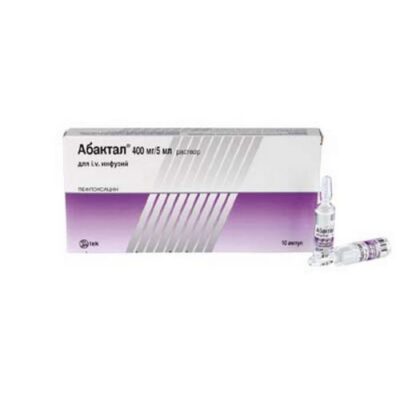
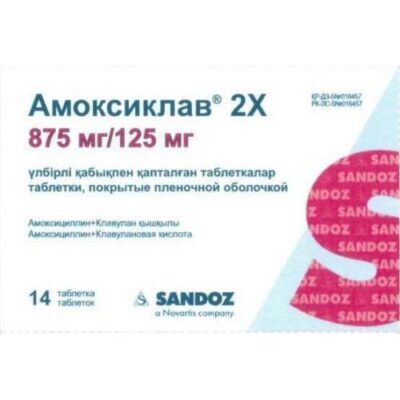






Reviews
There are no reviews yet.